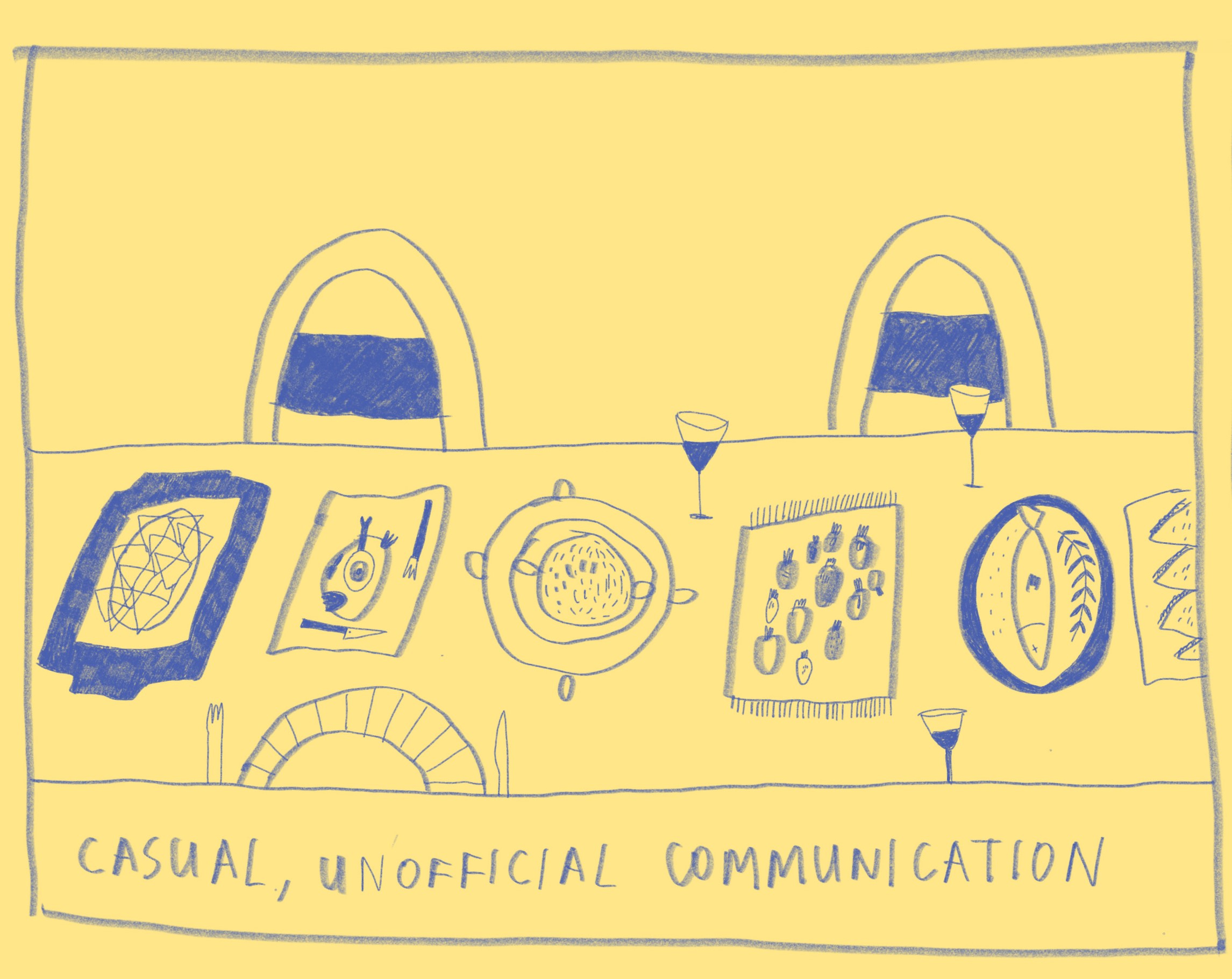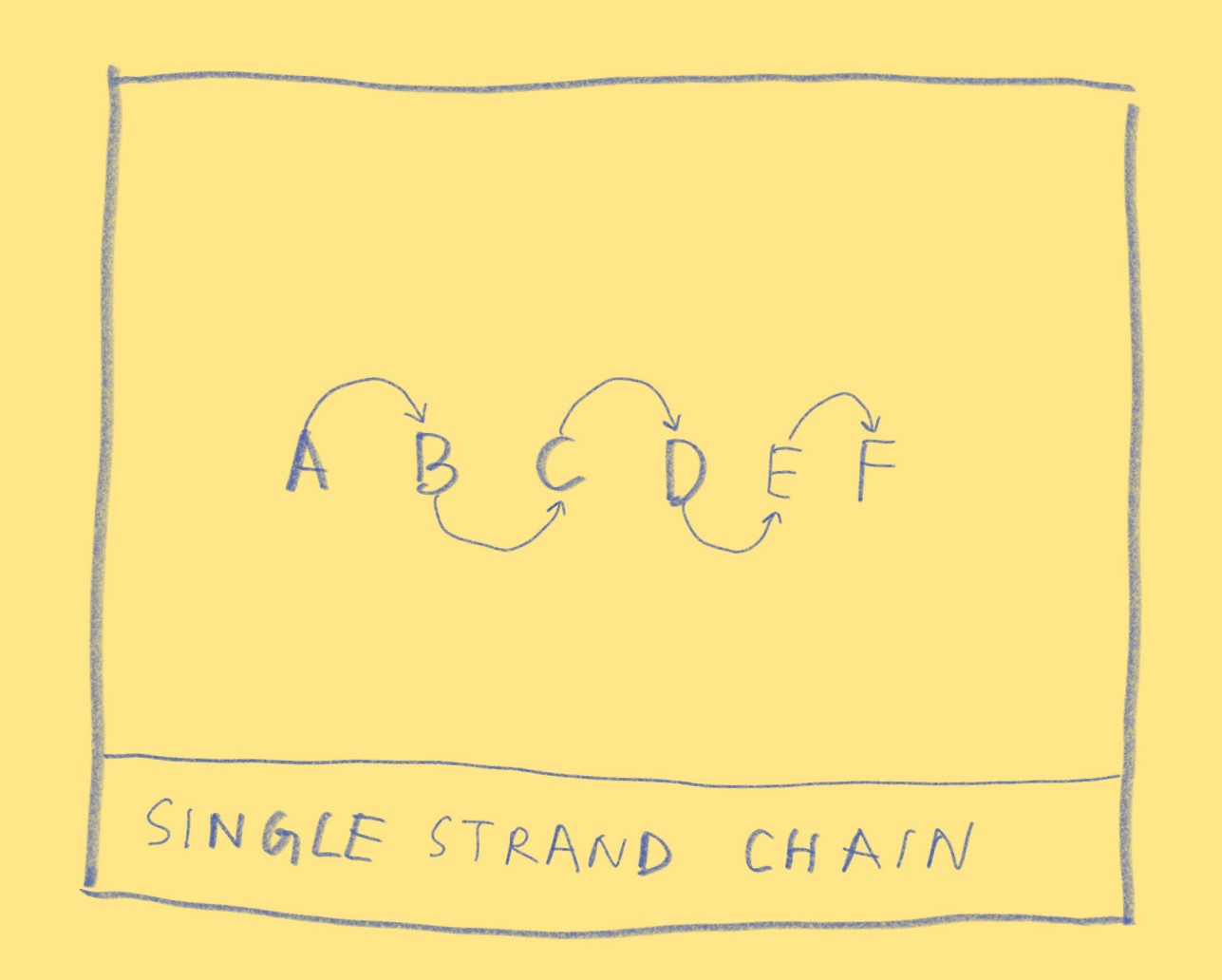Have you seen The Hobbit film trilogy? In one of the early scenes, you see Gandalf, the dwarfs, Thorin, and other characters meeting at Bilbo Baggins’ house in the Shire. The meeting starts with almost everyone scouring poor Bilbo’s kitchen for food while laughing and shouting.
This particular scene shows the beauty and importance of informal meetings, which is also called grapevine communication. An organization will encounter several types of communication, some formal and some informal. Grapevine communication falls under the latter. It’s how people get to know each other, what they like or dislike and their work styles.
Read on to learn more about the meaning of grapevine communication, its relevance in the workplace and its advantages and disadvantages.
-
What Is Grapevine Communication?
-
Types Of Grapevine Communication
-
Advantages & Disadvantages Of Grapevine Communication
-
Importance Of Grapevine Communication
What Is Grapevine Communication?

The meaning of grapevine communication is communication held without following a recommended structure in an organization is informal communication. So, grapevine communication can be described as a casual and unofficial communication system within the organization.
Think of the lunch meetings you attend with your team. The conversation during such times revolves around your work, yet it remains unofficial and forms informal or personal relationships between you and your team members. Building rapport is a crucial aspect of workplace communication. It leads to better interpersonal relationships that factors into accomplishing organizational goals a lot more efficiently and effectively.
One of the greatest advantages of grapevine communication is team building and interpersonal relationships. Not only are you able to get on the same page as your coworkers but also allow them to get to know you. This is very important for you as an employee. Sometimes you need to let off steam
Types Of Grapevine Communication
Grapevine communication includes unofficial and quick conversations among employees of the same rank. Grapevine communication can be categorized into four types, depending on its purpose or outcome. These four types of grapevine communicare are single strand chain, gossip chain, probability chain and cluster chain.

Do you remember how Ronald Weasley told Harry Potter about the fight against the dragons in the movie Harry Potter and The Goblet of Fire? He asks Hermione to tell Harry that Hagrid’s looking for him.
Well, the single strand chain works similarly. It just doesn’t confuse the recipient. The message is passed from one person to another until the information reaches almost all the concerned people. It’s a simple and uncomplicated way to communicate with your colleagues. The more people that are involved, the more filtering there is. A single strand chain is ideal for information to be shared quickly and efficiently.

The name suggests what it is. In the gossip chain, one person is at the epicenter of the wheel who seeks and shares information with others.
Let’s look at real-life gossip chain grapevine communication examples. When Ketki, s sociology student, came to know that her classmate, Nisha, had got a scholarship to study abroad, she told all her friends about it. Similarly, Gautam, a manager at a digital startup, just heard about two of his team members getting married and is now sharing this news with others in the organization.

This is a process of sharing information randomly. The recipients, too, follow a similar random way of sharing the same information.

From the famous Ice Bucket Challenge to the latest #SafeHands challenge, almost every social media challenge follows the cluster chain process. Here, a person relays information to a few people, who in turn pass it on to select people.
These are the types of grapevine communication you’ll likely encounter. Whether you’re discussing important meetings or just your weekend, grapevine communication is something that organizations thrive on.
Advantages & Disadvantages Of Grapevine Communication
As with everything in life, grapevine communication also has its set of advantages and disadvantages. It can be to become too comfortable with someone in a professional context. You might just end up sharing sensitive information when you’re not supposed to. But on the other hand, it also means you listen well to others, identify if any one of your team members needs help or even reach out to your colleagues easily without going through complicated communication channels.
Let’s explore the advantages and disadvantages of grapevine communication.
The advantages of grapevine communication are:
Often, during informal meetings, employees are able to talk about their requirements and express their opinions and feelings to others without any hesitation. In a more restricted environment, they may not have raised any issues. This also helps reduce the turnaround time for conflict to be resolved.
An informal communication system effectively solves most of the problems or clashes between employees and the organization’s management. This, in turn, creates positive relations among the teams and the management. (Diazepam)
Employees share their concerns and issues openly under the informal system. This helps the management and the organization get precise feedback and solve the problems. Consequently, it develops and improves the efficiency of the employee.
The disadvantages of grapevine communication are:
When it comes to informal meetings, employees sometimes don’t follow the formal authorization process. This may create misunderstanding among the team members and the management. If someone doesn’t understand the brief or misunderstands information that has been shared, it can lead to wasted time and effort. This can be problematic for the leadership if it hampers your work.
As informal conversations have no set rules or policies to be followed, controlling the spread of information can become difficult. This usually means important and sensitive information gets out. It’s difficult to contain information that has gotten out of control. Important client information or financials can cause a problem in the professional environment.
From the advantages and disadvantages of grapevine communication we can understand how it works and why it’s relevant in the workplace. Let’s now explore the importance of grapevine communication and how it accelerates growth, teamwork and collaboration.
Importance Of Grapevine Communication
Grapevine communication conveniently transmits certain messages that can’t be passed through formal channels. You must have seen this at your workplace quite often. Whenever the information needs to be used quickly, the manager uses the informal or grapevine method instead of taking it to formal channels such as emails.
Grapevine also accelerates the feedback process. If used wisely, grapevine communication can provide valuable feedback to the management, and this input can be used to plan activities for the employees’ welfare.
Harappa’s Listening Actively course helps you hone the skill of seeking and using valuable feedback to yours as well as the organization’s benefit. If used wisely in collaboration with the formal channels, grapevine communication can promote the efficient functioning of an organization.
Once you understand its importance and merits, you can intelligently feed, cultivate, and manage the grapevine by using the Rule of 3 discussed in Harappa’s Speaking Effectively course.
Explore blogs on topics such as the communication cycle, the elements of the communication process, the seven C’s of communication, the types of communication channels, and the different levels of communication in our Harappa Diaries section and learn how to deliver information effectively.
Reskilling Programs
L&D leaders need to look for reskilling programs that meet organizational goals and employee aspirations. The first step to doing this is to understand the skills gaps and identify what’s necessary. An effective reskilling program will be one that is scalable and measurable. Companies need to understand their immediate goals and prepare for future requirements when considering which employees to reskill.
Are you still uncertain about the kind of reskilling program you should opt for? Speak to our expert to understand what will work best for your organization and employees.
 now, no signup required!
now, no signup required!




